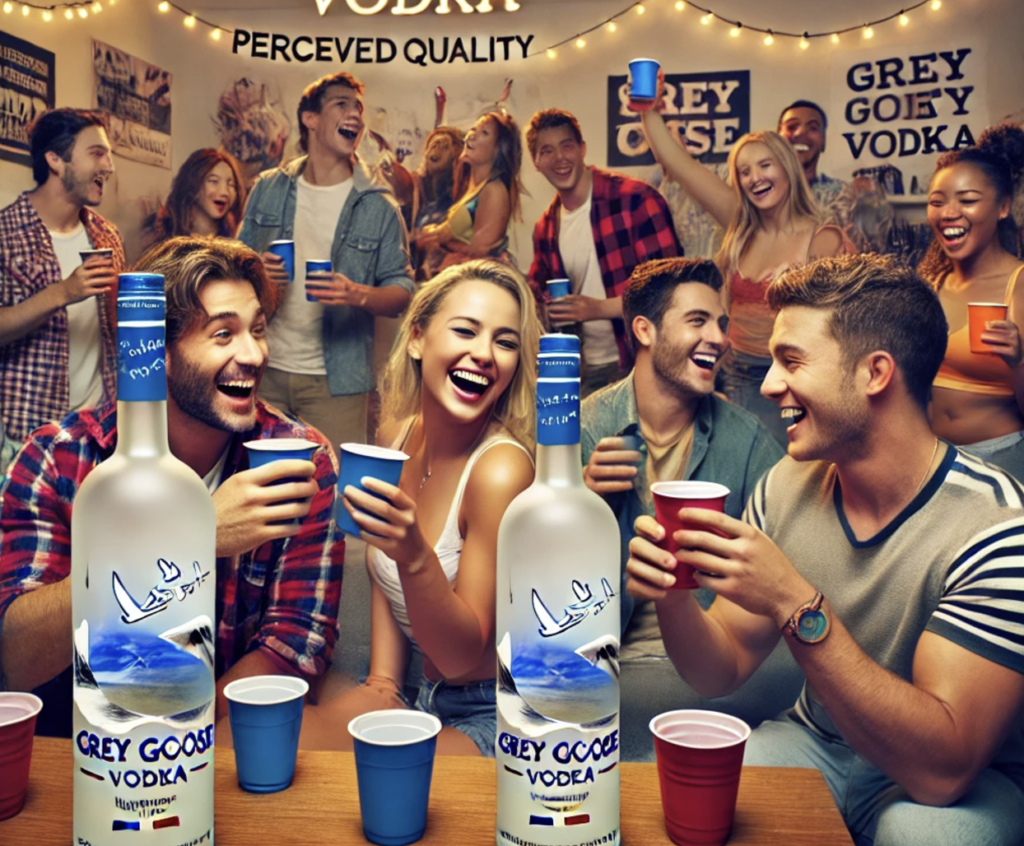When you reach for that bottle of Grey Goose Vodka at the store, what’s influencing your decision?
Is it the distinctive taste or the allure of the brand itself?
Many loyal fans of the brand swear by its unique flavor, but when put to the test in a blind taste scenario, surprisingly few can distinguish it from its competitors.
This phenomenon isn’t just about vodka – it extends to virtually every consumer choice we make, from the food we eat to the clothes we wear.
But why is this the case?
The answer lies in the power of storytelling and branding – elements that literally shape our experiences and perceptions.
The Experiment: Perceptions of Quality
In my college days, I went to a party where the host filled Grey Goose vodka bottles with a much cheaper, plastic-bottle vodka.
To my amusement, the guests raved about how “smooth” the vodka was, completely oblivious to the switch.
This wasn’t just a prank – it was an informal study on perception and expectation.
The guests believed they were consuming high-end vodka and adjusted their expectations – and even their taste perceptions – accordingly.
Psychology Behind Preferences: Expectations Shape Experiences
This scenario underscores a fundamental truth:
No experience occurs in a vacuum.
Every interaction, every choice comes pre-loaded with expectations shaped by previous experiences and the stories we’ve absorbed.
When we consume something that we’ve been primed to perceive as high-quality, our previous positive associations with the brand enhance our enjoyment.
Factors Influencing Consumer Behavior
Consumer behavior is heavily influenced by several psychological factors that branding experts leverage to shape perceptions:
- Scarcity: Items that are perceived as rare or limited edition can seem more desirable.
- Authority: Recommendations or endorsements by experts can enhance a product’s credibility.
- Aesthetics: Attractive packaging can significantly influence our perception of quality.
- Social Proof/Testimonials: Seeing others approve of a product reinforces our decision to like it.
First Impressions and Branding: Building an Image
Even if you’ve never heard of a product before, your initial impression plays a crucial role in shaping your perception.
From the very first touchpoint – be it:
- A logo
- An advertisement
- The packaging
- Or a brand experience shared by a friend
you begin to form an image of the brand’s value.
This is why companies invest heavily in their branding strategies from the outset.
Broader Applications: From Amusement Parks to Medical Treatments
The principles of branding and consumer psychology are not limited to tangible products – they apply to experiences and services as well.
Whether it’s:
- Choosing a vacation destination
- Selecting a healthcare provider
- Or even deciding on an amusement park
our choices are influenced by branding.
Each positive interaction reinforces our belief in the brand, creating a feedback loop that further solidifies our loyalty.
Conclusion: The Enduring Impact of Branding
The experiment with the vodka bottles in college was a simple but effective illustration of how expectations, shaped by branding and previous experiences, can override our actual sensory experiences.
This phenomenon explains why branding is not just about logos and marketing but about crafting stories that resonate on a personal level.
It’s these stories that:
- Define a brand’s image
- Influence consumer behavior
- And ultimately, dictate the market’s winners and losers.
By understanding the underlying psychology, businesses can create more effective branding strategies, and consumers can become more aware of why they prefer certain products over others.
You May Also Like:
How To Master The Game Of Human Nature (Lessons From The Stanford Prison Experiment)
Exclusive Millionaire Success Stories: From Lawn Mowers To Limousines
How To Use The McDonald's Franchise Model To Master Your Niche Site Project
Robert DeNiro: Profitable and Timeless Communication Principles
Customer Red Flags: Early Warning Signs That Save You Time and Energy
Why Going Viral Is Overrated (And How Some Creators Profit with Just 100 Subscribers)
The Fascinating Key To Keep Your Money
The Truth About Business: Cracking the Code To Success
My name is Mister Infinite. I've written 600+ articles for people who want more out of life. Within this website you will find the motivation and action steps to live a better lifestyle.


